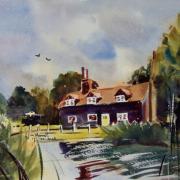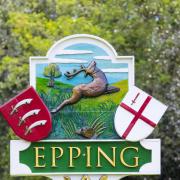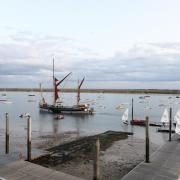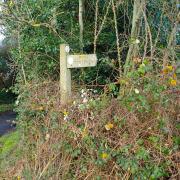Words by Mica Bale.
Think of a leaning tower and automatically the famous structure in Pisa comes to mind. However, did you know that Essex can boast its very own leaning tower? Although the leaning tower of Brightlingsea, better known as Bateman’s Tower, may not draw the same tourist numbers as its well-known counterpart, Essex’s own tilting tower has been part of our county’s landscape for generations.
The brainchild of local hero John Bateman, the tower is largely considered to be a folly built with his daughter’s welfare clearly in mind. John Bateman, although not born in Essex, was a key figure in the community. Having moved with his wife and daughter to Brightlingsea in the early 1870s, Bateman was known to be a generous man.
With a variety of interests, among them agriculture, Bateman often provided money from his own resources to fund local projects such as alms houses. According to some sources, Bateman would even provide everyday necessities for those who occupied those alms houses in the form of wood and coal to keep the tenants warm and bacon to feed them.

Renowned with fondness locally, John Bateman is perhaps best known for his work as the editor of the Great Landowners of Great Britain and Ireland. The four editions were key references for historians, most notably in the Victorian period, for its documenting and cataloguing of land and its owners. He was also the Deputy Lieutenant and Justice of the Peace for Essex.
It is possibly his tower, though, that has left his greatest mark on Essex’s history. Although the story varies slightly, it is largely believed that John Bateman’s daughter suffered from tuberculosis, so he decided to have a tower built by the sea for his daughter to be able to enjoy the health benefits of the fresh sea air.
Other stories report that it was designed for his daughter as a changing room, whilst some believe that the folly was intended for use as a lighthouse. Many would say that it was really a combination of all three reasons that led to the tower being created.
In any case, Bateman’s Tower was successfully constructed around 1880. At the time of it being built, follies were not wholly uncommon sights, however, in the years to come Bateman’s Tower would become recognised as Essex’s own leaning tower; a rare distinction outside of Italy.
At the point of construction, the tower was not supported upon the usual bedrock of strong materials such as iron, steel or concrete. Rather this two-storey tower is thought to have been built upon faggots: glorified bundles of wooden sticks bound together!
Remarkably, the tower has stood for roughly 140 years and, whether as an aspiration for a lighthouse or else a folly for a beloved daughter, Bateman’s Tower has been a part of the landscape for generations of locals and holidaymakers visiting the area. Owing to its somewhat weak foundations, a slight lean can be seen in the tower. Certainly, it is Essex's answer to Pisa and our county can boast that it does indeed have its very own tilting tower of Brightlingsea!




























